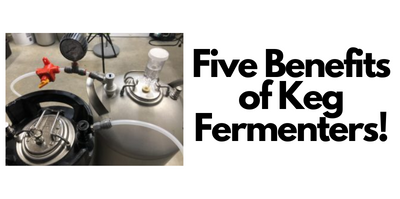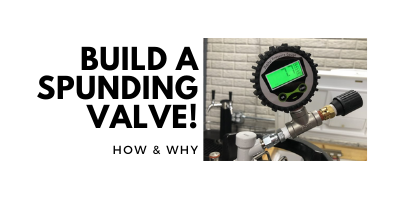
Hands on Review: FLOTit 2.0 Floating Dip Tube w/DFI, Double Filter Inlet!
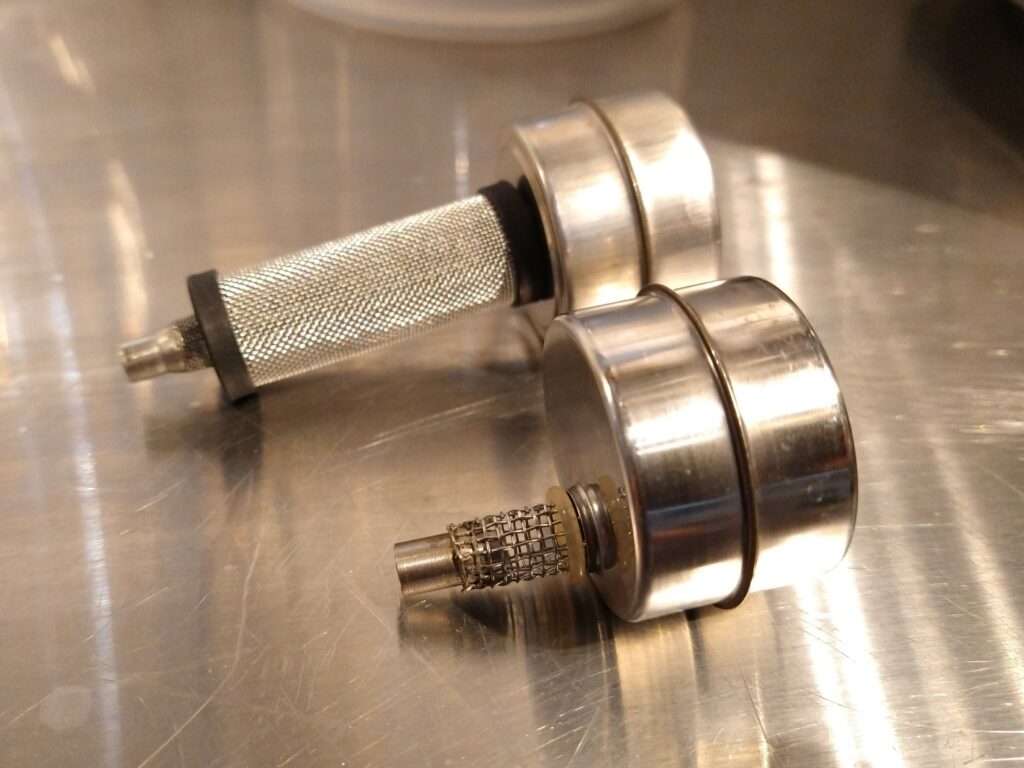
Updated: January 12, 2025
This review is by Homebrew Finds Contributor Brad Probert. Brad is an engineer, expert homebrewer and experienced reviewer. Grab a link to Brad’s website at the end of this review.
FLOTit Floating Dip Tube
Floating dip tubes are a hot commodity in the homebrewing world lately. Many people are ditching their fixed steel tubes and replacing them with a length of silicone tubing attached to a stainless ball float. If you’ve been living under a rock and don’t know the point of the floating dip tube, it’s pretty simple. It floats on top of your beer so that as you draw out beer, you get clear beer from the top while everything else precipitates out and makes its way to the bottom
Check Pricing & Availability:
- FLOTit 2.0 – No Beer Left Behind Floating Dip Tube with Double Filter Inlet (DFI) of 500/300 micron for always clear beer. Made in USA – affiliate link, note that multiple variations of this product may be available, as such a different version may appear at this link
- Includes UNI dip tube – FLOTit 2.0 with UNI dip tube – No Beer Left Behind Floating Dip Tube with Double Filter Inlet (DFI) of 500/300 micron for always clear beer, less beer waste and no clogging – affiliate link, note that multiple variations of this product may be available, as such a different version may appear at this link
- Includes hook tool and UNI dip tube – FLOTit 2.0 with UNI dip tube & a HOOK tool – No Beer Left Behind Floating Dip Tube with DFI of 500/300 micron for always clear beer, less beer waste and no clogging. Ideal for fermenting in kegs – affiliate link, note that multiple variations of this product may be available, as such a different version may appear at this link
A version is also available that works as an upgrade to traditional ball float floating dip tubes
FLOTit 2.0 – Double Filter Inlet (DFI) with 500/300 micron mesh for floating dip tube with a ball float for always clear beer, less beer waste, and no clogging. Best upgrade for pressure fermenter – affiliate link, note that multiple variations of this product may be available, as such a different version may appear at this link
Related:
- Torpedo Keg Buoy ™ Floating Dip Tube KEG655 – Hands on Review
- Search: Floating Keg Dip Tube on Amazon
- Top Draw Beer Pick Up Tube via William’s Brewing
- Five Benefits of Using Corny Kegs As Fermenters
- Also for the maker of FLOTit – SPUNDit 2.0 Spunding Valve – Hands on Review
Related: Fermenting Under Pressure!
This article contains affiliate links. We may make a small percentage if you use our links to make a purchase. You won’t pay more and you’ll be supporting Homebrew Finds and more content like this. Thank you for your support!
FLOTit is a product made by Trong Nguyen- hand assembled at his home, and sold through eBay. He’s gone through iterations of improvements on his float design, but even his first design was something other than the ubiquitous silver ball design. The issue with the ball design he was trying to overcome was when the ball floats, the inlet tube dangles down below (most of the time) and hits the yeast cake while there’s still a layer of beer left on top.
The initial design (FLOTit 1.0) had a cylindrical float, with the inlet tube fixed to the center of the float. To provide a layer of protection from transferring sediment, the end of the tube is fitted with a mesh screen. The FLOTit 2.0 still has a cylindrical float, but the hole is offset where the tube is attached. The offset design helps keep the end submerged in the beer, especially as the beer level gets low.
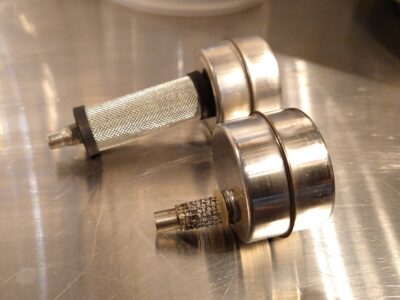 DFI Fine Mesh End vs Larger Mesh End
DFI Fine Mesh End vs Larger Mesh End
The FLOTit 2.0 also incorporates an improvement on the meshed end. It has a Double Filter Inlet (DFI), which is 2-3” long meshed cylinder packaged within another meshed cylinder. The outer cylinder has a 500 micron mesh, and the inner is a 300 micron mesh. The DFI is somewhat modular in that it can be used with the FLOTit cylinder floats, or you can add it to your dip tube with the floating ball, if you wanted.
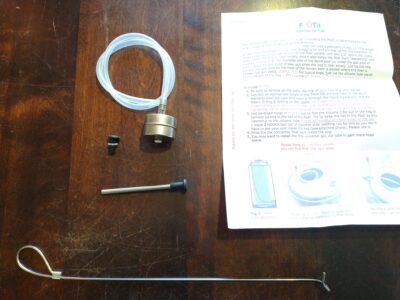 FLOTit Kit with Short Gas Tube
FLOTit Kit with Short Gas Tube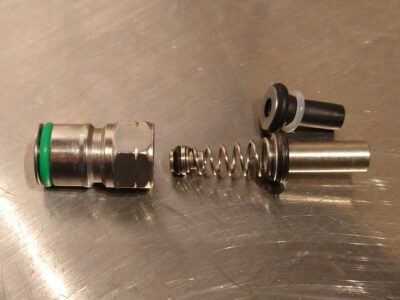 Length Comparison of Normal Gas Tube vs FLOTit Short Tube. Also Pictured: Valuebrew Custom Green O-Rings
Length Comparison of Normal Gas Tube vs FLOTit Short Tube. Also Pictured: Valuebrew Custom Green O-Rings
The basic FLOTit kit comes with the float, a length of silicone tubing, and short metal dip tube to go in the keg (underneath the ball post). The diameter of this short tube and silicone tubing are small enough to fit up through the liquid out hole on the keg. This allows you to attach the silicone tubing from outside the keg, where you have easier hand access. There is also another kit option that adds in a short gas dip tube if you want to swap it out for a slightly shorter length. With the shorter gas tube, it makes for an easy way to pour out any residual sanitizer you might have left in your keg after purging (just turn the keg upside down with a gas ball lock attached to the gas post). These special tubes are a molded silicone boot, with a metal washer bonded to it. This makes them more compliant to any surface imperfections at the keg interface, but it also means you need to be sure not to overtighten. The directions say hand tight then 1/4 – 1/2 turn further with a wrench.
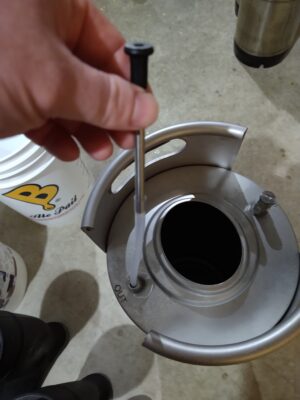 Tubing Attached to Liquid Tube Outside of Keg. Related: Hands on Review Torpedo Kegs
Tubing Attached to Liquid Tube Outside of Keg. Related: Hands on Review Torpedo Kegs
Hands on Review
I use a floating dip tube in one spot in my brewing process currently, and that’s in a cold crash keg. After fermentation is done, I transfer the beer into an oxygen-purged cold crash keg, add some CO2 head pressure, then stick it in the fridge to cold crash and get yeast to drop out. The floating ball lock in this arrangement is great, as I pull beer off from the top after a couple days of cold crash, into my serving keg. With the cold crash dropping out most of my sediment, I keep my serving kegs simple with the standard/rigid dip tube. So I did some trials with both the FLOTit 1.0 and 2.0 in this cold crash keg.
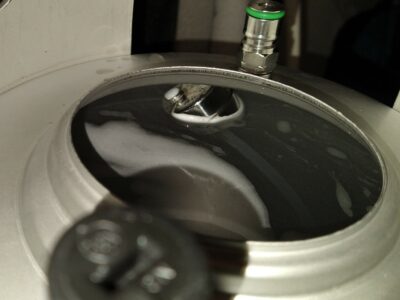 FLOTit 2.0 Offset Float Tilts Tubing End Under Liquid
FLOTit 2.0 Offset Float Tilts Tubing End Under Liquid
There is an error state with the ball float design that I wanted to see if the FLOTit could solve. With the ball float, occasionally the dangling pickup tube can get itself wedged such that it sits at the top level of the beer and sucks in mostly CO2. After cycling through multiple batches, I can say the FLOTit resolved this issue. In particular, with FLOTit 2.0’s off-center attachment hole on the float, it created a slight tilt to the float, ensuring the pickup tube end was always sitting just below the liquid level.
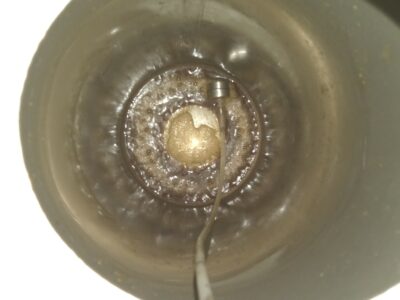 FLOTit 2.0 Sitting at Bottom of Cold Crash Keg
FLOTit 2.0 Sitting at Bottom of Cold Crash Keg
Measuring the beer at the end when it started spitting foam, I had 9-10 ounces left in the keg. This was perfect for my cold crash keg, because by the time I got to that level, I was starting to get into the yeast sediment anyway. My cold crash keg is a 6-gallon Torpedo keg, so the bottom is domed upward inside the keg. This geometry makes is tricky for floating dip tubes to get truly the last drop, as the float can bottom out on the domed up bottom. I didn’t try it in my traditional cornys, but with those being domed downward, I expect I would have even less beer left at the end.
![]() Silicone Tube Too Long and Resting on Bottom of Keg
Silicone Tube Too Long and Resting on Bottom of Keg
I did find that the FLOTit, like its floating ball brothers, is sensitive to the right length of silicone tubing. I initially had the tubing too long, and as it got toward the bottom, the silicone tubing hit the bottom before the float, and the tubing ended up making a ‘J’ shape, instead of an ‘L’. With the ‘J’ shape, the tip curved up and stuck up above the beer level. So I trimmed it back and made sure the float would sit at the bottom of the keg on the opposite side (below the gas in post), and not so long that the tubing was laying on the bottom.
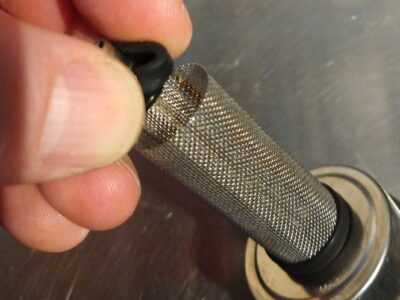 Screen Inside Screen Layout of DFI
Screen Inside Screen Layout of DFI
Something to keep in mind with the DFI is where in your process you’re using the floating dip tube. In my cold crash keg, I push beer in from the fermentor through the liquid out line so I can fill the keg from the bottom. But that means any dry hop residue/etc. from the fermentor has to pass through the mesh screen before it can fill the keg. I quickly found that doesn’t work when transferring a dry hopped beer, because it plugged early in the transfer phase. Using the much larger screen opening with the non-DFI end worked fine, so I stuck with that. If you’re using it in a pressurized fermentor, where the floating dip tube is only used to pull beer out at the end of fermentation, the double-layer screen protection would be sequenced properly. But you would also need to ensure you didn’t have floating dry hops (cold crash first) or you could plug the screens on the transfer out.
Conclusions
Overall, FLOTit 2.0 worked very well for me. It solved the one problem I had with the floating ball dip tubes, which allowed me to fully utilize all the advantages a floating dip tube can provide. Priced at about the same cost as the ball floating dip tubes, it provides a good alternative. And if you use it inside a pressurized fermentor, the additional mesh screening might be something that uniquely fits your needs.
Check Pricing & Availability:
- FLOTit 2.0 – No Beer Left Behind Floating Dip Tube with Double Filter Inlet (DFI) of 500/300 micron for always clear beer. Made in USA – affiliate link, note that multiple variations of this product may be available, as such a different version may appear at this link
- Includes UNI dip tube – FLOTit 2.0 with UNI dip tube – No Beer Left Behind Floating Dip Tube with Double Filter Inlet (DFI) of 500/300 micron for always clear beer, less beer waste and no clogging – affiliate link, note that multiple variations of this product may be available, as such a different version may appear at this link
- Includes hook tool and UNI dip tube – FLOTit 2.0 with UNI dip tube & a HOOK tool – No Beer Left Behind Floating Dip Tube with DFI of 500/300 micron for always clear beer, less beer waste and no clogging. Ideal for fermenting in kegs – affiliate link, note that multiple variations of this product may be available, as such a different version may appear at this link
A version is also available that works as an upgrade to traditional ball float floating dip tubes
FLOTit 2.0 – Double Filter Inlet (DFI) with 500/300 micron mesh for floating dip tube with a ball float for always clear beer, less beer waste, and no clogging. Best upgrade for pressure fermenter – affiliate link, note that multiple variations of this product may be available, as such a different version may appear at this link
Related:
- Torpedo Keg Buoy ™ Floating Dip Tube KEG655 – Hands on Review
- Search: Floating Keg Dip Tube on Amazon
- Top Draw Beer Pick Up Tube via William’s Brewing
- Five Benefits of Using Corny Kegs As Fermenters
- Also for the maker of FLOTit – SPUNDit 2.0 Spunding Valve – Hands on Review
Related Top Post: 5 Benefits of Keg Fermenters
More Photos
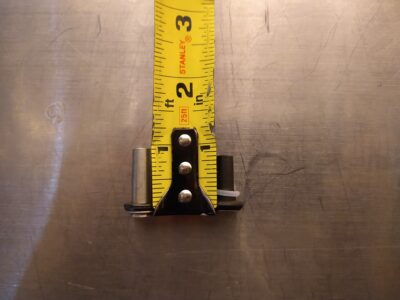 Length Measurement of Short Gas Tube
Length Measurement of Short Gas Tube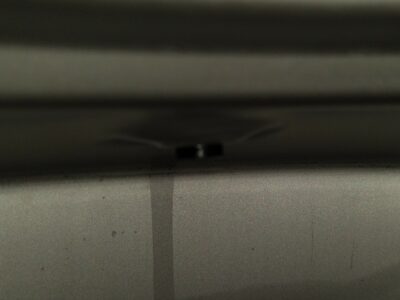 Short Gas Tube Protrusion Inside Keg
Short Gas Tube Protrusion Inside Keg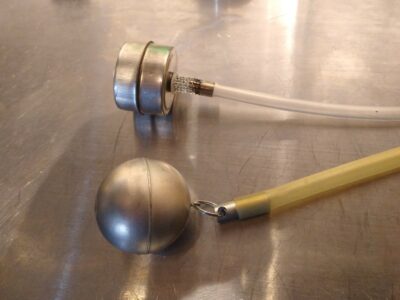 Comparison Ball Float vs FLOTit
Comparison Ball Float vs FLOTit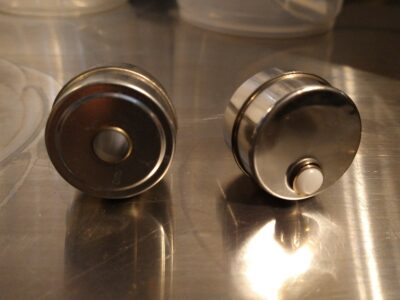 Comparison FLOTit 1.0 on Left to 2.0 on Right
Comparison FLOTit 1.0 on Left to 2.0 on Right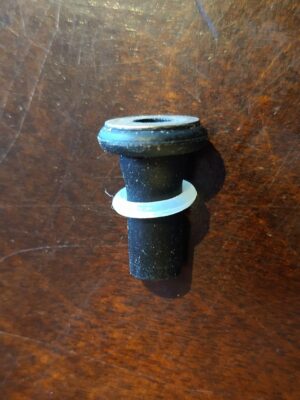 Short Gas Tube
Short Gas Tube![]() Short Liquid Tube That Silicone Tubing Attaches To
Short Liquid Tube That Silicone Tubing Attaches To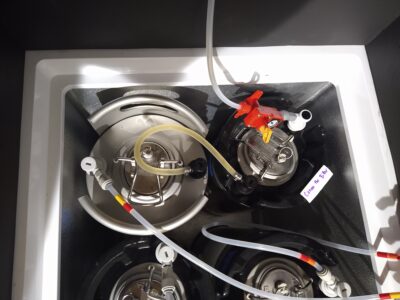 Transfer from Cold Crash Keg with FLOTit to Serving Keg
Transfer from Cold Crash Keg with FLOTit to Serving Keg
Our Spunding Valve Resource Post!
tsrspundMore Homebrew Finds!
- Last 50 Finds!
- Top Deals – a curated list of the best deals
- Homebrew Reviews – one of the largest libraries of homebrew reviews in existence!
- Our Top Posts – tips, how-tos, resources posts and more
 Support Homebrew Finds, Keep Quality Homebrew Content Coming
Support Homebrew Finds, Keep Quality Homebrew Content Coming
Most Recent Deals
10 Most Recent Homebrew Resource Posts & How-To’s!
We are Homebrew Review HQ! Our 10 Most Recent Reviews
pinnedThis post may contain affiliate links. We may make a commission when you use our links. This will never cost you extra. Thank you for supporting Homebrew Finds!
greatdealsBy Brad Probert. Check out Brad’s website – beersnobby.com
Special Thanks to Trong Nguyen for providing the unit used for evaluation in this review
Price, promotions and availability can change quickly. Check the product page for current price, description and availability.
Make sure the components you use are compatible and rated for your intended application. Contact manufacturer with questions about suitability or a specific application. Always read and follow manufacturer directions tag:lnksfxd revew:flotit #tag:tpr




